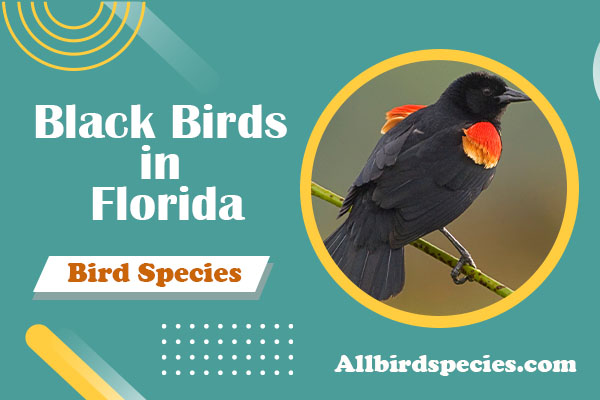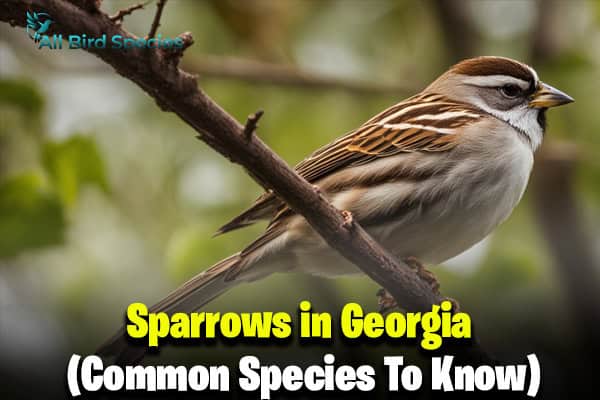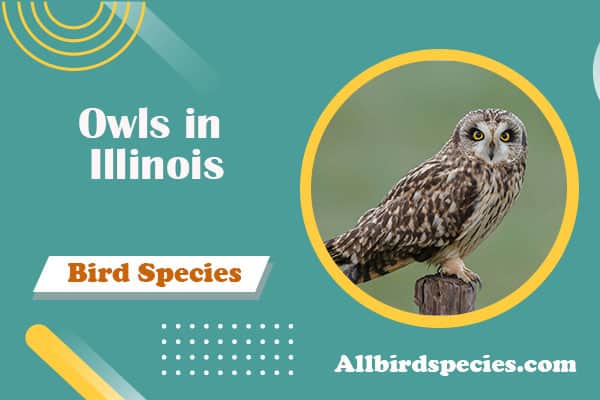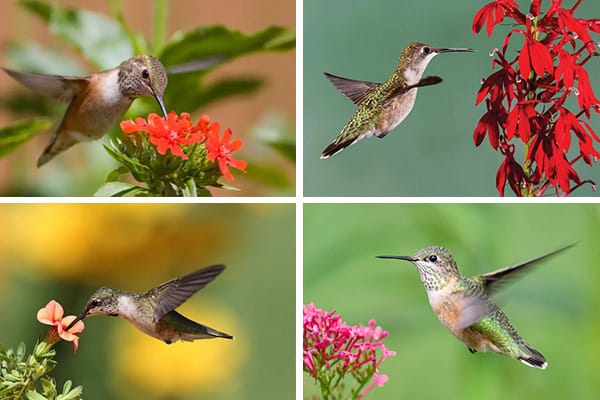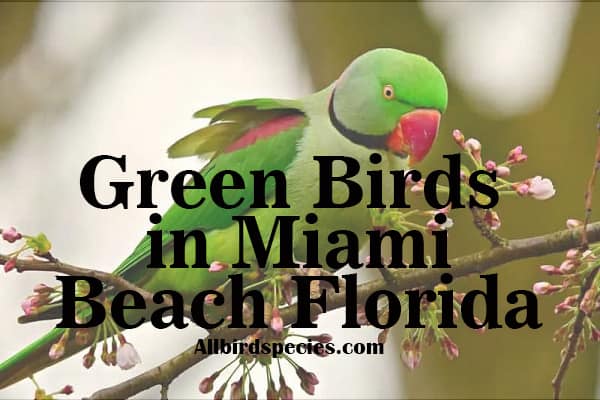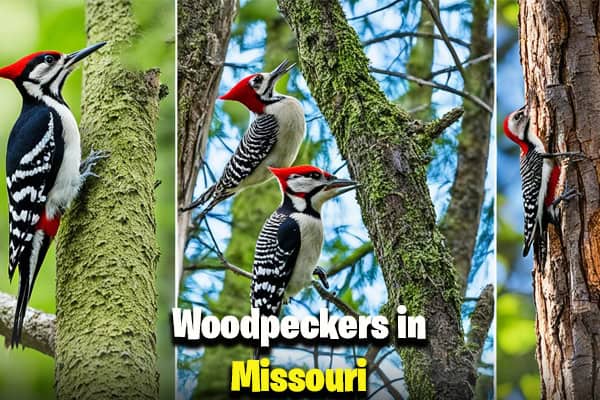13 Types Of Black Birds In Florida (ID Guide)
Did you know Florida has over 50 species of black birds? This sunny state is a bird watcher’s dream. You’ll learn about 11 black bird species in Florida in this guide.
Each bird has its own special traits and ways of acting. From the American Crow to the Black Skimmer, knowing these birds makes Florida’s wildlife more interesting. Let’s explore what makes each bird unique and how to spot them.
Identifying Common Black Birds
Spotting common black birds means knowing how to tell males from females. These differences help you identify birds better and enjoy watching them more.
Characteristics of Male and Female Black Birds
Male black birds often have bright, shiny feathers. Females have duller, browner feathers. For example, the Red-winged Blackbird’s male is black with red and yellow patches. The female is brown and streaked.
This helps us know which bird we’re seeing in nature.
Behavioral Traits
Watching how black birds act can also tell us what they are. American Crows are smart and use tools to find food. They also like to be with others, gathering in big groups.
Other birds, like the Red-winged Blackbird, can be very aggressive. This is especially true when they’re trying to protect their territory. Knowing how they act helps us understand their lives better.
| Bird Species | Male Characteristics | Female Characteristics | Common Behavior |
|---|---|---|---|
| Red-winged Blackbird | Black plumage with red and yellow shoulder patches | Brown, streaked appearance | Aggressive during breeding season |
| American Crow | All black, glossy feathers | Similar to males, less glossy | Highly social, problem-solving |
~Large Black Birds You Might Spot~
In Florida, bird spotting can lead to exciting encounters with large black birds. These birds grace the skies and landscapes. Knowing the notable species can enhance your experience. Also, Here are a few you may come across:
1. American Crow
- Scientific Name: Corvus brachyrhynchos
- Size: 38–50 cm (15–20 in)
- Weight: 320–620 g (11.3–21.8 oz)
- Lifespan: Up to 7-8 years
- Diet: Omnivorous (insects, seeds, fruits, small animals)
The American Crow is a well-known large black bird in the area. It has an all-black body with a shiny sheen. Known for their smarts and fun personalities, American Crows live in many places. Their “caw-caw” call often lets you know they’re around.
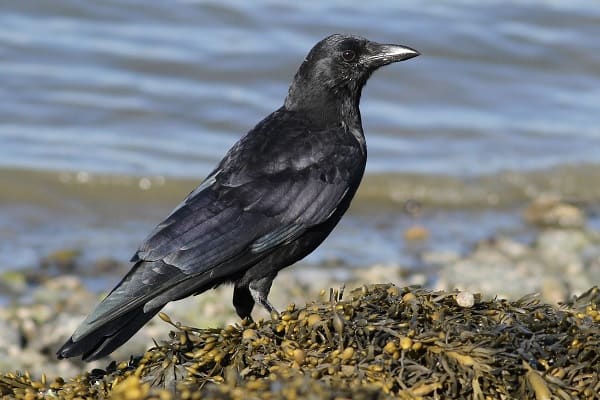
2. Black Vulture
- Scientific Name: Coragyps atratus
- Size: 60–70 cm (24–28 in)
- Weight: 1.8–3.6 kg (4.0–7.9 lb)
- Lifespan: Up to 16 years in the wild
- Diet: Primarily scavenger, feeding on carrion.
Black Vultures have bald red heads and short tails. They eat carrion and are key to the ecosystem. Seeing them soar or perched in trees is memorable. Their flight silhouette is easy to spot.

3. Swallow-tailed Kite
- Scientific Name: Elanoides forficatus
- Size: 61–76 cm (24–30 in)
- Weight: 300–600 g (10.6–21.2 oz)
- Lifespan: Up to 15 years in the wild
- Diet: Primarily feeds on insects and small vertebrates
The Swallow-tailed Kite is a sight to see with its long, forked tails. Watching them glide high above wetlands is a joy. Their unique shape and flight make them a favorite among bird watchers.

4. Anhinga
- Scientific Name: Anhinga anhinga
- Size: 76–102 cm (30–40 in)
- Weight: 1.2–2.5 kg (2.6–5.5 lb)
- Lifespan: Up to 20 years in the wild
- Diet: Primarily fish, but also eats amphibians and small invertebrates.
The Anhinga, or “snakebird,” is a black water bird that dives well. It swims with just its neck showing, and its spread wings dry after diving. Anhingas are skilled fishers, diving in Florida’s waters to catch fish.
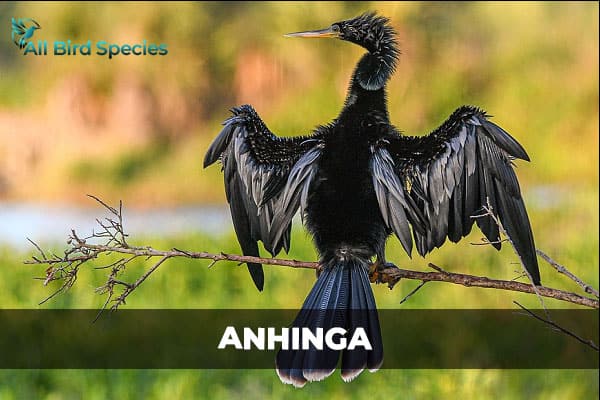
~Small Black Birds in Florida~
In Florida, you can see many small black birds. Each has its own special traits and ways of acting. The Red-cockaded Woodpecker, Brown-headed Cowbird, and European Starling are some of the most interesting.
5. Red-cockaded Woodpecker
- Scientific Name: Picoides borealis
- Size: 20–23 cm (7.9–9.1 in)
- Weight: 50–70 g (1.8–2.5 oz)
- Lifespan: Up to 12 years in the wild
- Diet: Primarily insects, especially ants and beetles
The Red-cockaded Woodpecker lives in the pine forests of the southeastern U.S., including Florida. Also, Males have a bright red patch on their heads. This makes them stand out.

They like to nest in old-growth pine trees. This means they need healthy forests to survive. They help keep their habitats diverse, supporting other species too.
6. Brown-headed Cowbird
- Scientific Name: Molothrus ater
- Size: 18–22 cm (7–8.7 in)
- Weight: 40–60 g (1.4–2.1 oz)
- Lifespan: Up to 11 years in the wild
- Diet: Omnivorous, primarily seeds and insects.
The Brown-headed Cowbird has a sturdy body and a rich brown head. It’s different from other small blackbirds. This bird lays its eggs in other birds’ nests, which can harm the host’s young.
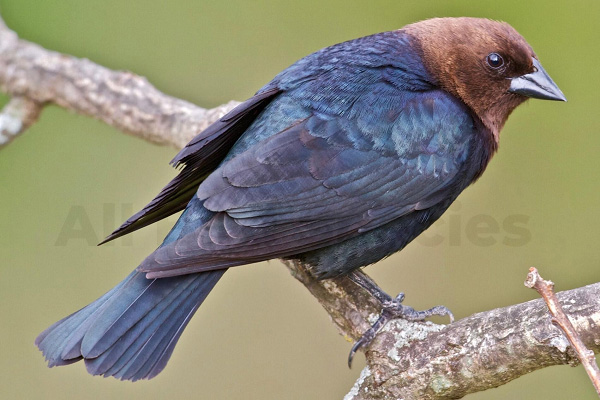
They can live in cities too, where they look for food. This shows how they can adapt to new places.
7. European Starling
- Scientific Name: Sturnus vulgaris
- Size: 19–23 cm (7.5–9 in)
- Weight: 60–100 g (2.1–3.5 oz)
- Lifespan: Up to 15 years in the wild
- Diet: Omnivorous, feeding on insects, fruits, seeds, and scraps
The European Starling has shiny black feathers that look duller in winter. They were brought to Florida as an invasive species. Now, they live in many places here.
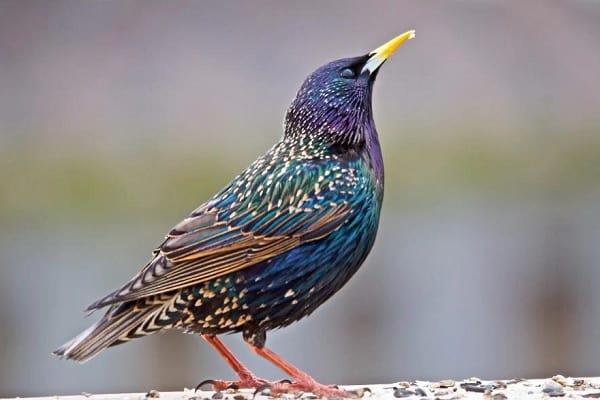
They have strong beaks and love to be in big groups. Watching them fly together is amazing. It shows how these birds can thrive in different places.
~Unique Water Black Birds~
Florida is a haven for birdwatchers and nature lovers State. It’s home to many unique waterbirds. The Double-crested Cormorant and the Black Skimmer are two such birds. They show off special features that make them stand out in coastal areas.
8. Double-crested Cormorant
- Scientific Name: Phalacrocorax auritus
- Size: 70–90 cm (27–35 in)
- Weight: 1.5–3.5 kg (3.3–7.7 lb)
- Lifespan: Up to 6 years in the wild
- Diet: Primarily fish, but also eats crustaceans and amphibians.
The Double-crested Cormorant is black with a long neck. It’s a striking sight in Florida’s skies and waters. This bird dives deep to catch fish.

Unlike other waterbirds, its feathers aren’t waterproof. So, it spreads its wings to dry off after swimming. Spotting this bird in Florida can be a thrilling experience for birdwatchers.
9. Black Skimmer
- Scientific Name: Rynchops niger
- Size: 38–48 cm (15–19 in)
- Weight: 250–500 g (8.8–17.6 oz)
- Lifespan: Up to 20 years in the wild
- Diet: Primarily small fish
The Black Skimmer has a long, thin bill. The lower mandible is longer than the upper one. This helps it skim the water’s surface to catch small fish.

Black Skimmers nest in colonies along Florida’s coast and sandy beaches. They’re a joy to see on a birdwatching trip.
~Black Birds in Central Florida~
In Central Florida, you’ll see many black birds. This area is great for birds that live in wet places. Seeing these birds helps us love Florida’s wildlife more. The Red-winged Blackbird, Common Gallinule, and Boat-tailed Grackle are some of the most interesting birds here.
10. Red-winged Blackbird
- Scientific Name: Agelaius phoeniceus
- Size: 18–23 cm (7–9 in)
- Weight: 40–100 g (1.4–3.5 oz)
- Lifespan: Up to 15 years in the wild
- Diet: Omnivorous, feeding on seeds, insects, and fruits.
The Red-winged Blackbird is common in marshes and wet areas in Central Florida. Males have shiny black feathers and bright red and yellow patches on their shoulders. They can be very protective during nesting season.
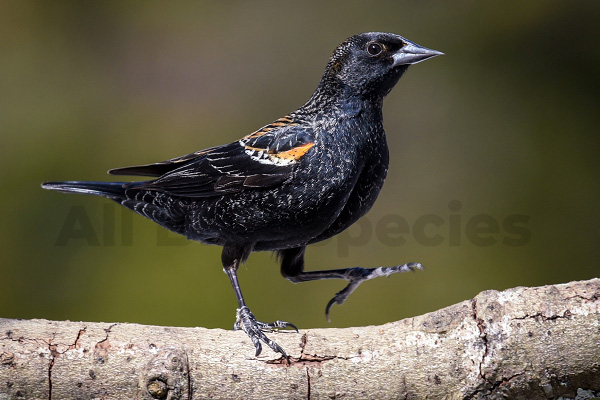
Females are less colorful, with a brownish look that helps them hide.
11. Common Gallinule
- Scientific Name: Gallinula galeata
- Size: 32–40 cm (12.6–15.7 in)
- Weight: 400–800 g (0.88–1.76 lb)
- Lifespan: Up to 10 years in the wild
- Diet: Primarily aquatic plants, seeds, insects, and small invertebrates.
The Common Gallinule has long legs and a yellow bill with a red shield. It moves through floating plants, looking for food. This bird helps keep wetlands healthy, adding to Central Florida’s bird diversity.
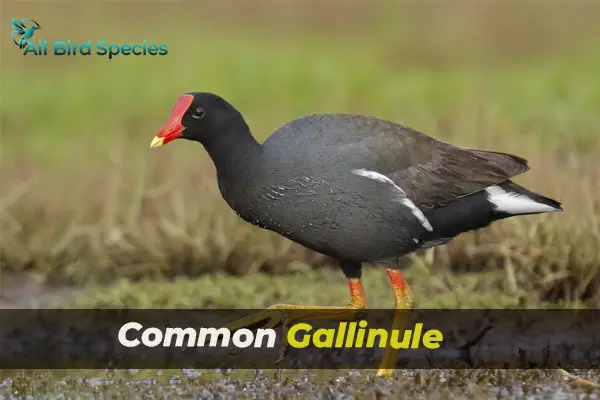
12. Boat-tailed Grackle
- Scientific Name: Quiscalus major
- Size: 30–34 cm (12–13 in)
- Weight: 100–200 g (3.5–7.1 oz)
- Lifespan: Up to 13 years in the wild
- Diet: Omnivorous, feeding on insects, seeds, fruits, and scraps.
The Boat-tailed Grackle is seen in coastal areas. Males have shiny feathers and make loud sounds. They live in groups near water, looking for food.
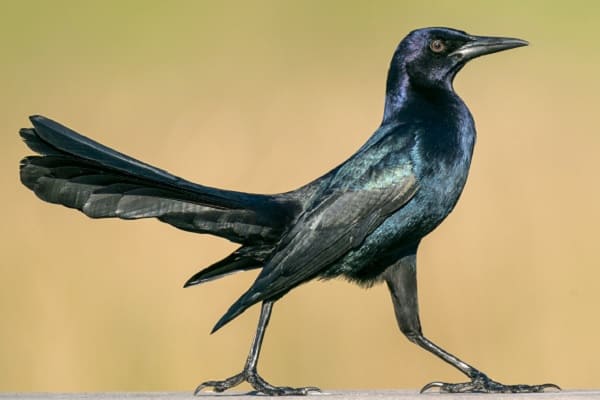
Their social behavior and loud calls make them stand out among Florida’s blackbirds.
| Bird Species | Habitat | Distinctive Features | Behavior |
|---|---|---|---|
| Red-winged Blackbird | Wetland habitats | Black plumage with red/yellow shoulder patches | Aggressive during nesting |
| Common Gallinule | Marshes and wetlands | Long legs; yellow bill; red shield | Forages on floating vegetation |
| Boat-tailed Grackle | Coastal habitats | Iridescent plumage; loud calls | Forages in groups |
~Black Birds in Southwest Florida~
Southwest Florida is full of life, especially when it comes to birds. The Common Grackle is one of them. It’s big, black, and has shiny feathers. Spotting this bird can make your birdwatching better and help you learn more about birds.
13. Common Grackle
- Scientific Name: Quiscalus quiscula
- Size: 28–34 cm (11–13.5 in)
- Weight: 80–150 g (2.8–5.3 oz)
- Lifespan: Up to 22 years in the wild
- Diet: Omnivorous, feeding on insects, seeds, fruits, and human food scraps.
You can find the Common Grackle in open places like fields and by the coast. It has a long tail and beautiful colors. They eat many things, from seeds to bugs.
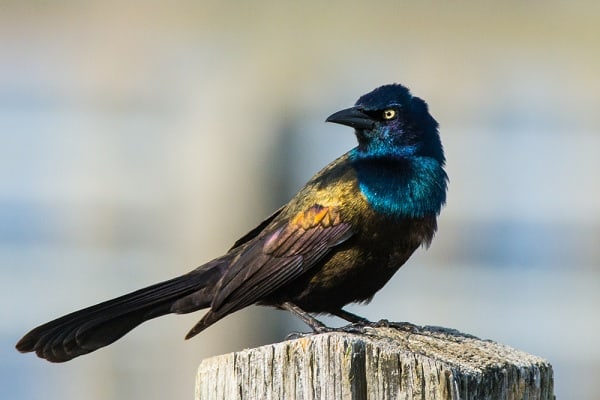
Identification Tips
Learning to spot black birds is easier with the right tips. Here are some important things to remember:
- Size: Common Grackles are bigger than some birds in Southwest Florida.
- Shape: Notice their long tails and long bodies. These are key features.
- Plumage: Their shiny feathers look black at first but show blue and green close up.
- Behavior: They like to eat together, which helps you know it’s them.
- Vocalizations: Get used to their different sounds.
Watching how they eat can also help you learn. Use field guides and pictures to get better at identifying birds in Southwest Florida.
Black Birds in South Florida
South Florida is home to many black birds. These birds live in different places like the coast and wetlands. They are well-suited to the warm weather and lots of water.
When you go to parks, wetlands, or beaches, you might see these birds. They eat and nest in different ways. This makes them fun to watch for bird lovers.
Look for these birds in South Florida’s outdoors. Learning about their homes and habits makes watching them even better. It helps you appreciate these amazing birds more.
| Common Name | Habitat | Key Characteristics |
|---|---|---|
| Common Grackle | Wetlands, parks | Iridescent plumage, long tail |
| Boat-tailed Grackle | Marshes, coastal areas | Long, distinctive tail, vocal |
| Red-winged Blackbird | Marshes, fields | Red and yellow shoulder patches |
| Black Vulture | Open areas, wetlands | Dark plumage, bald head |
Features of Black Birds in Florida
Black birds in Florida have many special features. These traits show how they adapt and eat. They play important roles in Florida’s wildlife and ecology.
Adaptations to the Environment
Many black birds have special ways to live in Florida’s different places. For example, the Double-crested Cormorant dives well to catch fish. The Boat-tailed Grackle does well in cities, finding food among people.
Their feathers help them stay warm and hide from predators. This is key for surviving in Florida’s changing weather.
Diet and Feeding Habits
Black birds in Florida eat different things based on their species and where they live. Most eat seeds, insects, fruits, and small animals. The Brown-headed Cowbird is special because it lays eggs in other birds’ nests.
Coastal black birds, like the Black Skimmer, mostly eat fish. This shows how varied their eating habits are, helping them survive.
Read More🐦Related Articles:
| Spiritual Meaning of Birds Chirping at 3am |
| Hawks In Georgia |
| Small Birds with Long Beaks |
| Hawks in Illinois |
| Sparrows in Ohio |
Final Word
Learning about the different black birds in Florida makes you appreciate the state’s wildlife more. You’ve seen many species on your birdwatching trips. These include the strong American Crow and the beautiful European Starling.
Each bird is important in Florida’s ecosystem. They all add to the beauty of Florida’s bird life.
Studying these birds teaches you a lot. You learn about their behaviors, calls, and how they live. This knowledge makes birdwatching even more fun.
By watching and learning about these birds, you help others see Florida’s wildlife too. You’ll always find something new to learn, connecting you more to nature.
In short, black birds in Florida are exciting for birdwatchers. They help you love Florida’s nature more. They also help protect their homes.
So, keep watching and learning. Use your binoculars to explore more. Florida’s black birds are waiting for you.

